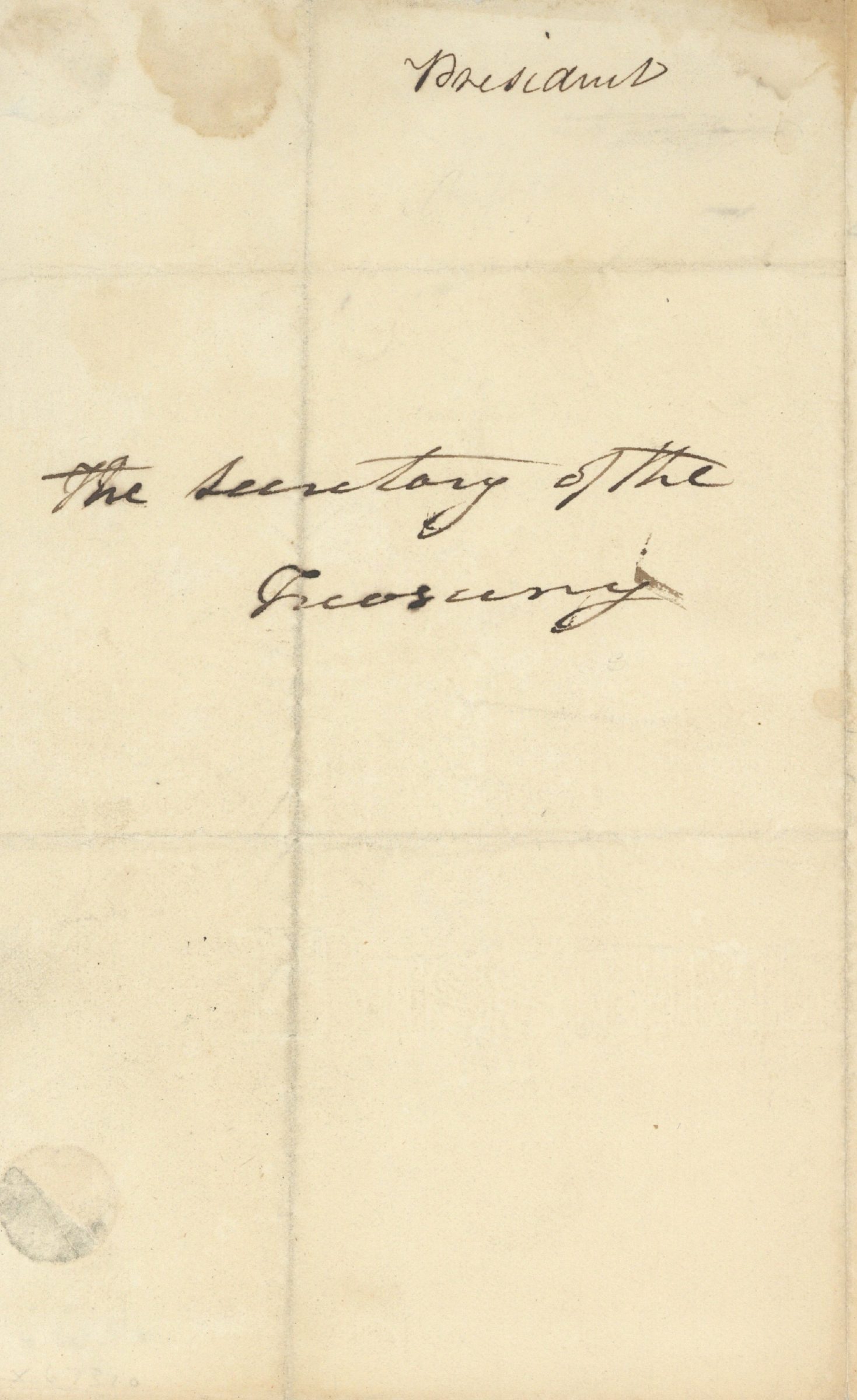Preparing for His December 1830 State of the Union Address, President Andrew Jackson Asks the Secretary of the Treasury for a Report on the Nation’s Receipts and Expenditures




He requests “a statement of the receipts into the Treasury for the fiscal year of 1830, & with the expenditures”, and “whether any, & if any, what changes would be beneficial on the credit system of duties…to give greater security to the collection of our revenue…”
- Currency:
- USD
- GBP
- JPY
- EUR
- CNY
On May 10, 1800, Congress passed an “Act supplementary to the act, entitled ‘An act to establish the Treasury Department’”, which required the Secretary of the Treasury to report annually the receipts and expenditures of the United States government. The purpose cited by the act was to give “information to Congress in...
On May 10, 1800, Congress passed an “Act supplementary to the act, entitled ‘An act to establish the Treasury Department’”, which required the Secretary of the Treasury to report annually the receipts and expenditures of the United States government. The purpose cited by the act was to give “information to Congress in adopting modes of raising money requisite to meet the public expenditures.” In other words, Congress required this information to know how to manage the country’s finances. The information was compiled by the Treasury, generally on a quarterly basis.
But presidents also made use of this information. It governed their own conduct, and they also used it to provide Congress with interim information of importance to their programs and policies. Sometimes it would appear in their State of the Union addresses.
With the time for the 1830 State of the Union address approaching, President Jackson wrote his Secretary of the Treasury, Samuel Ingham, requesting the financial information that he wished to include.
Autograph letter signed, in the third person as “The President”, Washington, no date but circa late 1830, to “Secretary of the Treasury” (Ingham), with the integral leaf addressed by Jackson, “The Secretary of the Treasury.” Jackson not only requested the obvious totals of expenditures and receipts, but also asked for more specific break-outs that reflected his own interests. “The President with his respects to the Secretary of the Treasury, will thank him at as early a day or his convenience will permit to furnish him with a statement of the receipts into the Treasury for the fiscal year of 1830, & with the expenditures. The amount of principle & interest of the Public debt paid in 1830 – and whether any & if any what further provisions may be necessary for the better security of the revenue against smuggling – whether any, & if any, what changes would be beneficial on the credit system of duties – whether any additional warehouses are necessary for Deposits of Foreign merchandise, to give greater security to the collection of our revenue, with any other information he may conceive it would be proper to be communicated to Congress at their next session”.
Jackson delivered the State of the Union Address to Congress on December 6, 1830. He stated in relevant part, “According to the estimates at the Treasury Department, the receipts in the Treasury during the present year will amount to $24,161,018, which will exceed by about $300,000 the estimate presented in the last annual report of the Secretary of the Treasury. The total expenditure during the year, exclusive of public debt, is estimated at $13,742,311, and the payment on account of public debt for the same period will have been $11,354,630, leaving a balance in the Treasury on January 1st, 1831 of $4,819,781.”
It is extremely uncommon to find a letter containing a connection between a president and his State of the Union Address. We don’t recall seeing one before.

Frame, Display, Preserve
Each frame is custom constructed, using only proper museum archival materials. This includes:The finest frames, tailored to match the document you have chosen. These can period style, antiqued, gilded, wood, etc. Fabric mats, including silk and satin, as well as museum mat board with hand painted bevels. Attachment of the document to the matting to ensure its protection. This "hinging" is done according to archival standards. Protective "glass," or Tru Vue Optium Acrylic glazing, which is shatter resistant, 99% UV protective, and anti-reflective. You benefit from our decades of experience in designing and creating beautiful, compelling, and protective framed historical documents.
Learn more about our Framing Services












































































































